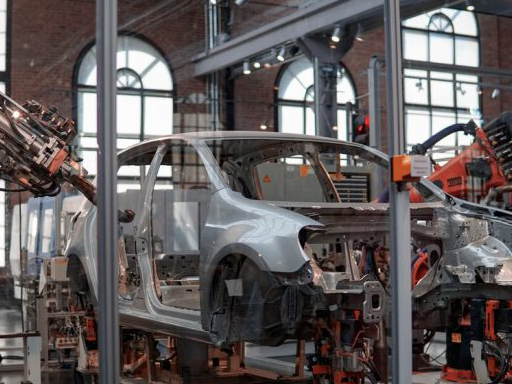Innovations used in the aluminium fabrication technique
Admin
2024-08-31
Aluminium fabrication forms an integral part of the construction and manufacturing industries. As the demand for aluminium-based products continues to advance, the need for improved fabrication processes is also rising. Engineers and builders continuously look for enhancements in the aluminium fabrication process. This brings their visions to life and allows them to add profitability to the aluminium industry.
Techniques for advanced aluminium fabrication:

-
Use of advanced CNC machines:
Computer Numerical Control machines are now being used quite effectively in aluminium fabrication. These machines are known for their high speed and performance. They can be used for cutting and shaping aluminium into desired shapes. They help create complex shapes and contours. The technology is being rapidly used in various high-tech industries like aerospace and automotive for its accuracy and efficiency. Welsh fabricator Dudley’s Aluminium has also begun work on its prestigious educational project with advanced techniques used in aluminium fabrication.
-
Advanced focus on environmental-friendliness:
The aluminium fabrication industry is largely driven by sustainability. The recyclability of aluminium has become one of the most important factors in the fabrication process. The metal can be repurposed independently without any compromise on its quality. Recycled aluminium is also being used quite frequently in the fabrication industry these days. This helps companies reduce their carbon footprint. They can also save themselves a considerable amount of money by using scrap aluminium instead of raw materials for the fabrication process.
-
Evolution of 3D printing:
Another groundbreaking discovery made in the aluminium fabrication process is 3D printing. This technology helps create complex and lightweight structures unlike other traditional methods. Two popular 3D painting techniques are Direct Metal Laser Sintering and Selective Laser Melting. These methods are mainly used for creating custom prototypes. They help increase the cost-effectiveness of the process. The turnaround time is also reduced to a considerable extent. This technology is being used for versatile purposes. They also help create intricate structures in an extremely seamless manner.
-
Use of high-strength alloys:
Aluminium alloys have taken the entire material and manufacturing industries by surprise. There has been an increase in the demand for stronger and lighter versions of this metal in the past few years. These are also gaining high popularity in the fabrication industry. These alloys have a high strength-to-weight ratio and are used in aluminium industrial profile. This makes them vital for equipment pieces where weight reduction is important. These alloys are mostly used to design aircraft parts and electric vehicles (EV). Nowadays, aluminium alloys are also being used efficiently for research purposes in the material industry.
-
Smart factory automation:
Industry 4.0 technologies have completely revolutionised aluminium fabrication processes. Previously, huge facilities were required to carry out the different processes related to this process. However, nowadays, the entire process can take place in compact spaces. IoT sensors and AI technologies are being integrated into the production lines. This can help optimise the process. IoT sensors can monitor the condition of the cutting tools in real-time. They can predict when a particular tool needs to be replaced. AI algorithms can also be used to identify inefficiencies in the fabrication process. Robotics is also used in aluminium fabrication to perform advanced tasks like riveting and welding. This improves safety at workplaces.
-
Increased focus on customised products:
Over the years, there has been an increased focus on customisation. Large-scale fabrication is still in trend. However, the focus is also gradually shifting to small-batch production. This trend is mainly because of the unique customer demands. Advanced techniques like 3D printing and CNC machining can be used to create customised aluminium products. This adds flexibility to the aluminium fabrication process. Small batch production is crucial in medical device manufacturing, where each patient may need different aluminium components.
To end with
The aluminium fabrication process is becoming a lot more advanced with the rapid developments being made in the field of technology. Many companies, like Technocraft Formwork, have also opened their aluminium fabrication facilities, where aluminium is processed through advanced methods. So, make sure you leverage the innovations made in technology during aluminium fabrication. This will ensure that the process gets carried out smoothly and your exact demands will also be met. Also, for top-notch fabrication services, you may contact AL Biz. They will identify your needs and offer you the best services on a budget.
Categories
Raw Materials
Scrap
Consumables
Primary Aluminium
Secondary Aluminium
Equipment
Technology
Downstream Products
Finished Products
Utilities
Services
Others
Recent Blogs
Subscribe to newsletter
Connect with us












